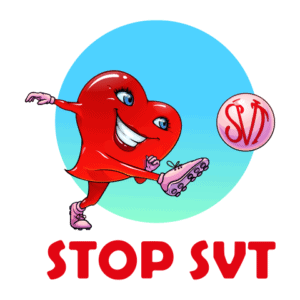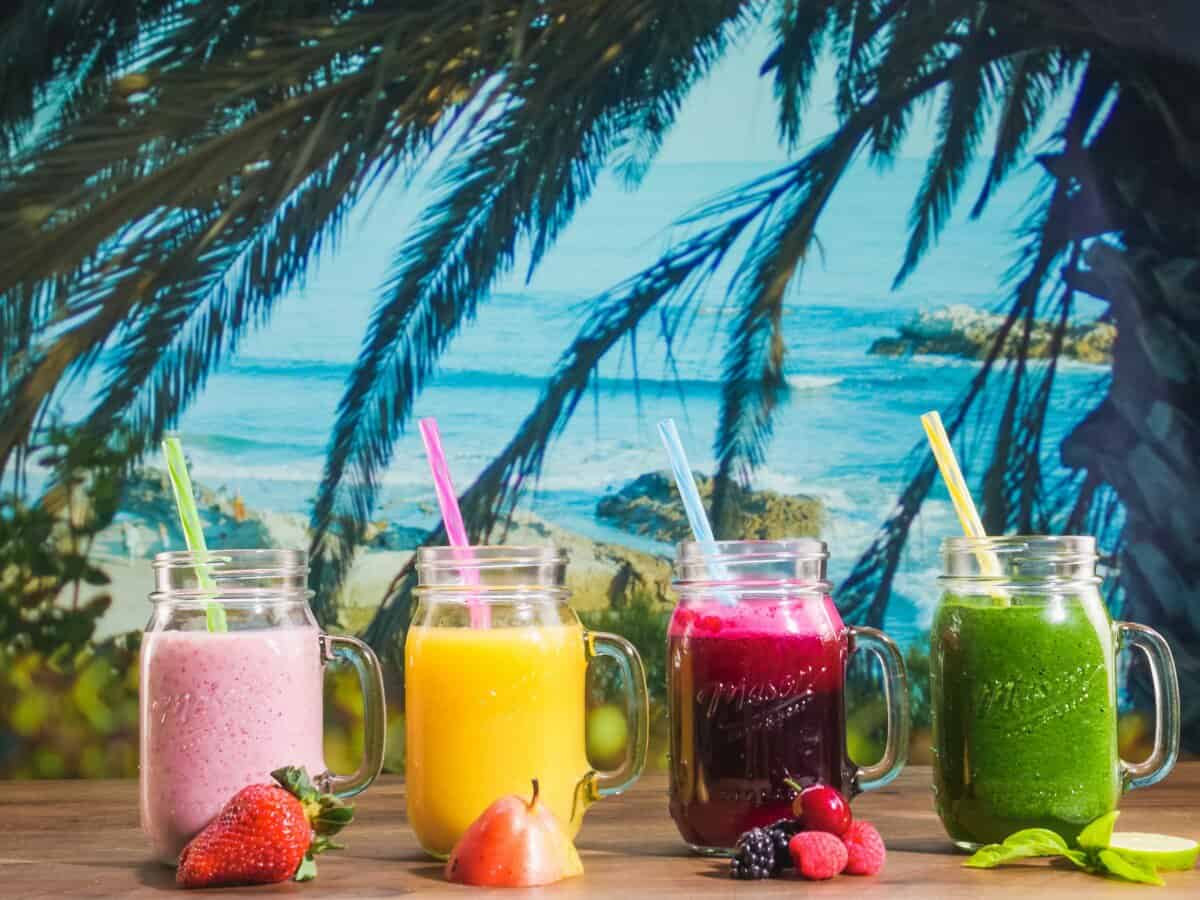Do you love trying new and innovative drink recipes? Do you also want to know the nutritional value of everything you put in your body? If so, then you’re going to love this new blog post!
I have collected some of my favorite drink recipes for you to try, and I have also calculated the mineral content for each one. With this information, you can quickly figure out how many minerals are in each drink.
Most people are familiar with the basic idea of electrolytes. They are minerals that conduct electricity in the body and are important for a variety of functions, including muscle contraction and heart function.
When we sweat, we lose electrolytes, which is why it’s important to stay hydrated.
However, many people don’t realize that electrolyte balance is also important for heart health.
Calcium, magnesium, potassium, and sodium all play a role in keeping the heart healthy. Calcium helps to keep the heart muscle contractions regular, while magnesium helps to prevent arrhythmia. Potassium and sodium help to regulate blood pressure.
Therefore, if you are experiencing SVT attacks and need to find something that will soothe your irritated heart, it’s important to make sure that you’re getting enough of these electrolytes in your diet.
Table of Contents
Why homemade electrolyte drinks ?
I found myself drawn into the world of minerals and their influence on our health. As someone who is health-conscious, I am always looking for ways to improve my diet and make sure I am getting all the nutrients I need. I was especially interested in electrolytes, which are essential for proper heart function.

That’s why I’ve created these healthy, all-natural electrolyte drink recipes.
Made with real food ingredients like coconut water, citrus fruits, and herbs, these drinks will help you hydrate and replenish your electrolytes without all the sugar and junk. So next time you’re feeling depleted, reach for one of these healthy electrolyte drinks instead of a sugary sports drink. Your body will thank you!
Balance your electrolyte intake
There are many different ways in which electrolytes can help us, but one thing is for sure – a balance in electrolyte intake is much more important and influential than heavy supplementation with a single mineral such as magnesium.
These recipes include all the major electrolytes (sodium, potassium, calcium, and magnesium) in easily-absorbable forms.
Magnesium is a mineral that many people think can solve all their heart problems, but it turns out you need more than just magnesium. In fact some studies show when there are low levels of calcium or potassium in your system the chances for SVT increase.
In my case I fell into this trap thinking too much about one specific nutrient while neglecting other important nutrients such as sodium.
Calcium, for instance, is essential in regulating the heartbeat. I was surprised to learn that supplementing with just magnesium would lower my calcium levels. It turns out, too much of a good thing is bad for you!
Minerals work together to maintain our body’s natural balance. When we take in too much of one mineral, the others suffer and can lead us toward illness and weakness in other areas like bones or muscles.
Do you ever get curious about how many minerals are in each drink you consume? I know I do! Each recipe includes the mineral content, making it easy for you to calculate just how healthy your drink is for you. Enjoy!
Homemade Citrus Electrolyte Drink
Citrus drinks are a great way to get your daily dose of electrolytes.
A 450 ml citrus drink will give you 12% of your recommended daily allowance of electrolytes.
Ingredients:
- 200 ml Orange fresh juice (1 orange)
- 200 ml Grapefruit fresh juice (1 small grapefruit)
- 50 g Strawberries fresh or frozen
- 5 g Chia seeds
- 3 g Cinnamon (1 teaspoon)
Instructions:
Get the fruit juice with the aid of a juicer. Using a blender, process all ingredients for less than one minute.
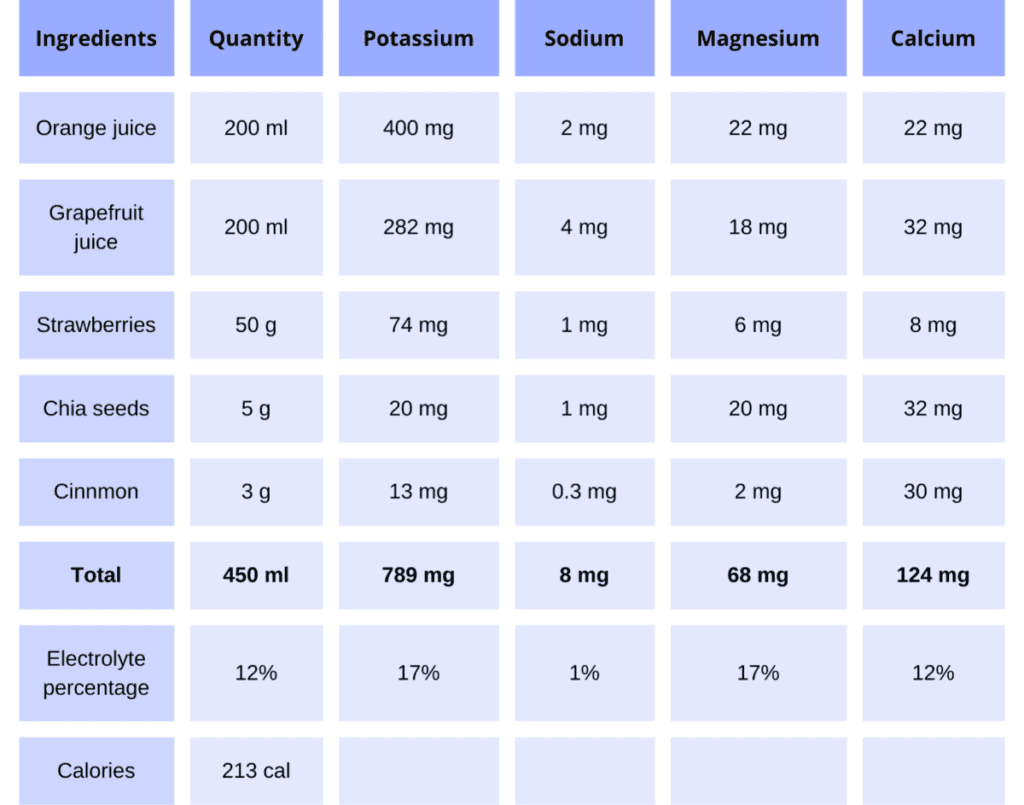
Hazelnut Drink with Electrolytes
This hazelnut-flavored drink is great for when you’re feeling tired or need an extra boost.
With a 400ml hazelnut drink, you will get 21% of your daily allowance for electrolytes.
Coconut water is a refreshing drink that is popular in many tropical countries. It is made from the liquid that is found inside young coconuts, and it has a light, sweet taste.
Coconut water is a good source of electrolytes and other minerals, and it is often used as a sports drink. It is a perfect addition to any electrolyte drinks.
Ingredients:
- 30 g Hazelnuts
- 250 ml Coconut water
- 120 g Banana (1 medium banana)
- 7 g Carob (2 teaspoons)
- 7 g Molasses
- 3 g Cinnamon (1 teaspoon)
Instructions:
Soak the hazelnuts for 3 to 6 hours, then add the coconut water and blend until it gets smooth.
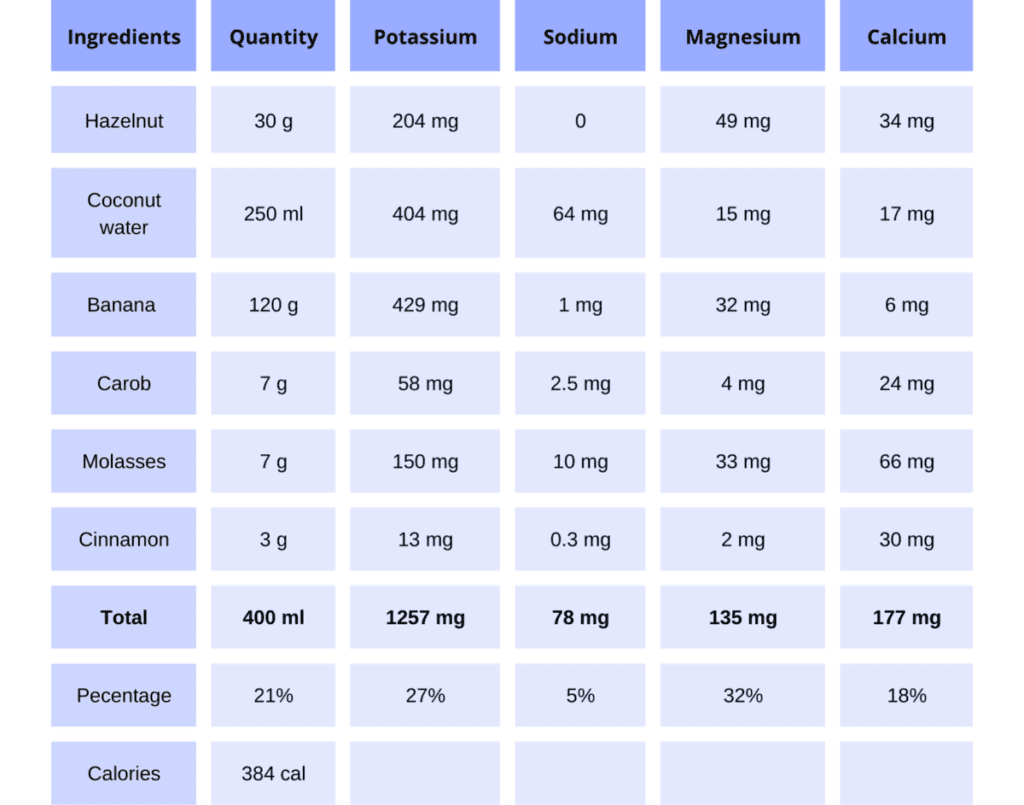
Carob Drink with Electrolytes
In a 370 ml Carob drink, you will get 15% of your recommended daily allowance of electrolytes.
Ingredients:
- 250 ml Pureharvest organic soy milk
- 120 g banana (1 medium banana)
- 7 g carob (2 teaspoons)
- 14 g Molasses
- 3 g Cinnamon (1 teaspoon)
Instructions:
Put all ingredients in a blender and process for one minute.
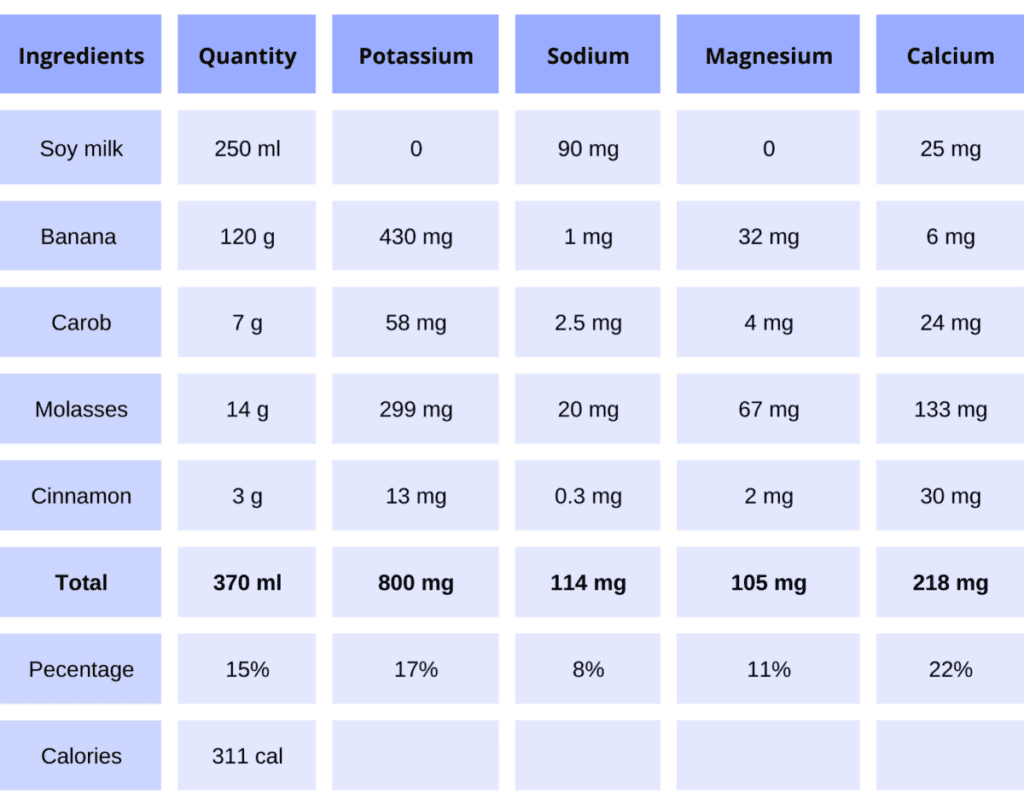
Vegetable Electrolyte Drink
In a 440 ml Vegetable drink, you will get 15% of your recommended daily allowance of electrolytes.
Ingredients:
- 5-6 carrots (125 ml fresh juice)
- 3-4 apples (125 ml apple juice)
- one medium beetroot (20 ml beetroot juice)
- 5-6 celery sticks (125 ml celery juice)
- 10 g parsley leaves
- 3 g ginger root
Instructions:
With the aid of a juicer, process the vegetables. Put the fresh juice obtained, parsley leaves, and ginger in a blender and process for less than one minute.
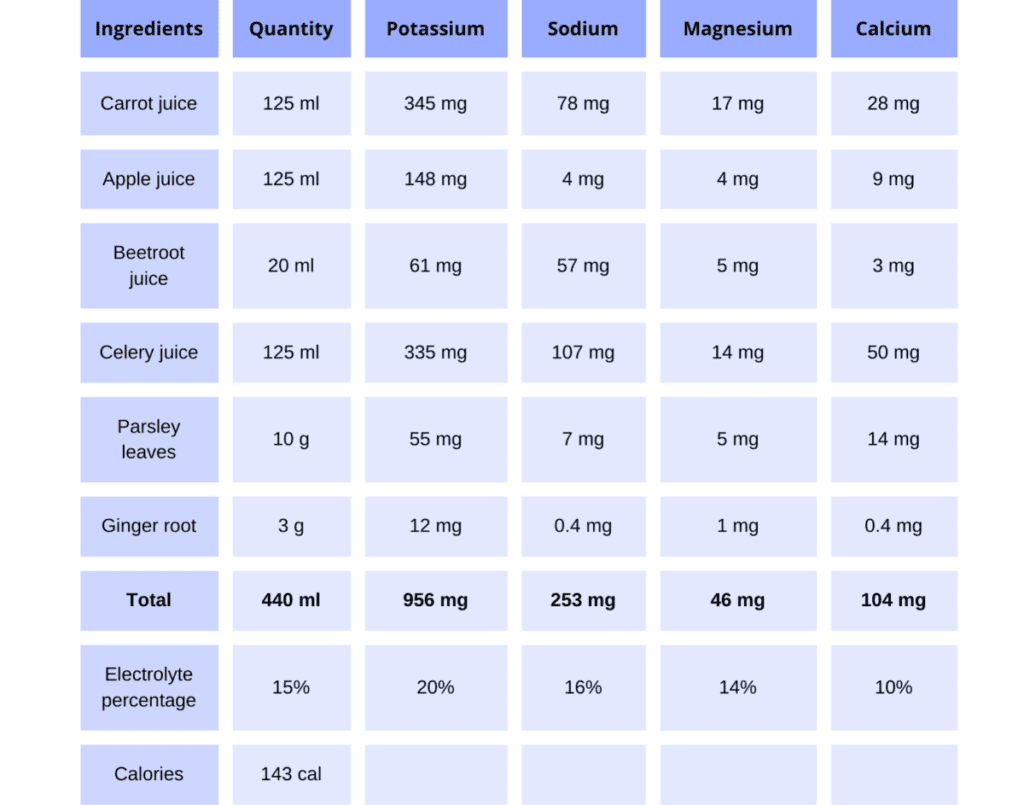
Berries Electrolyte Drink
500 ml berries drink, gives you 12 % of your recommended daily allowance of electrolytes.
Ingredients:
- 140 g frozen cherries
- 50 g frozen boysenberries
- 50 g frozen raspberries
- 50 g frozen blueberries
- 250 ml coconut water
Instructions:
- Blend raspberries, boysenberries and coconut water for one minute in a bullet
- Strain through a fine-mesh sieve to get rid of the small seeds
- Then blend all ingredients together
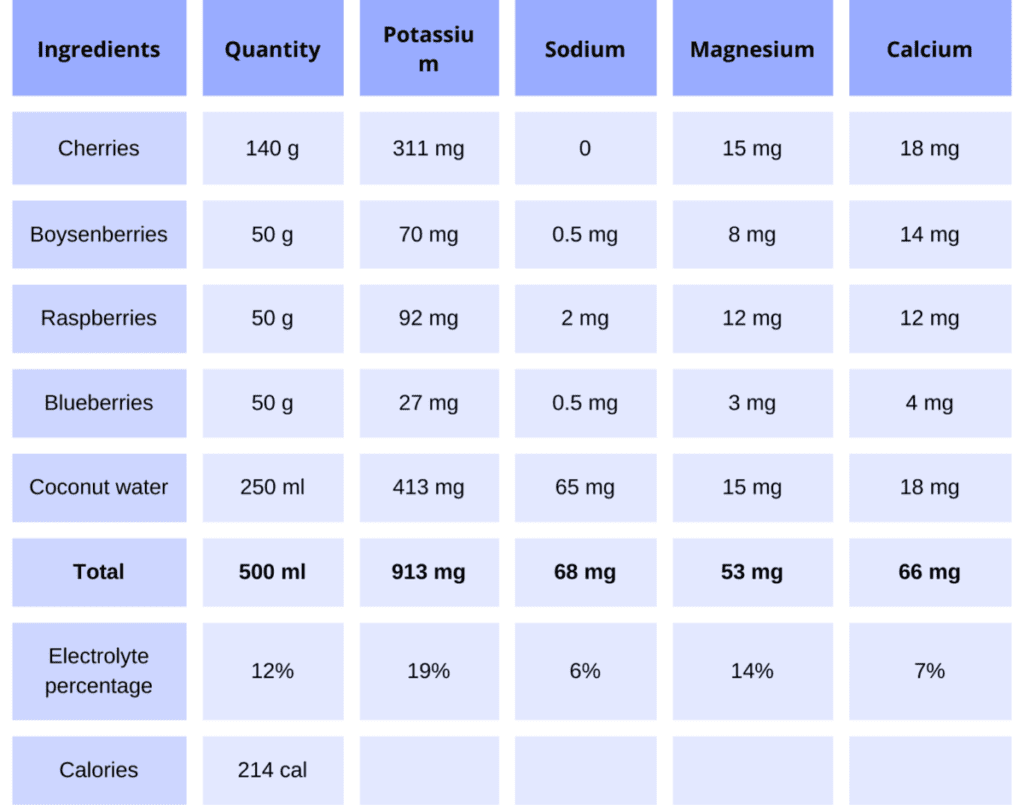
There are many benefits to drinking homemade electrolyte drinks, especially if you suffer from supra-ventricular tachycardia. Formulated with supra-ventricular tachycardia in mind, these drinks help to regulate and balance your heart rate, and can calm an irritated heart.
They are also packed with essential nutrients and minerals that your body needs to function properly. In addition, electrolyte drinks can help to prevent dehydration and maintain proper hydration levels.
When electrolyte concentrations are not optimal, it can lead to problems such as irregular heartbeats or heart palpitations. By drinking homemade electrolyte drinks, you can help keep your electrolyte levels in balance, which may help prevent these heart problems.
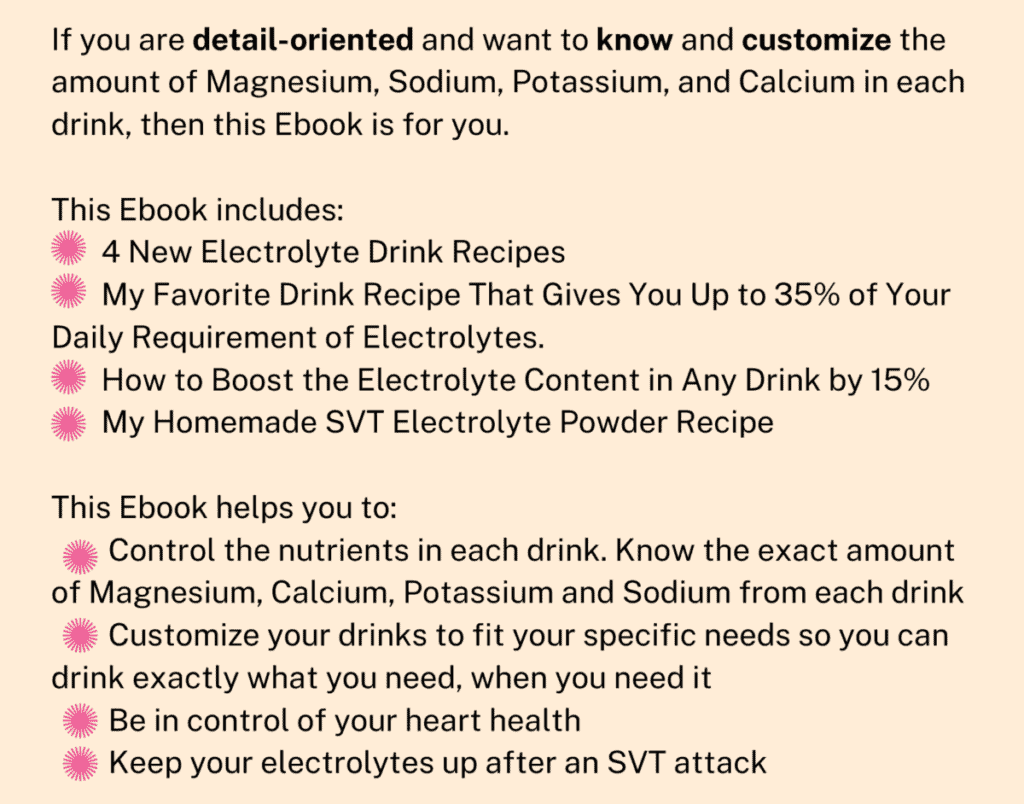

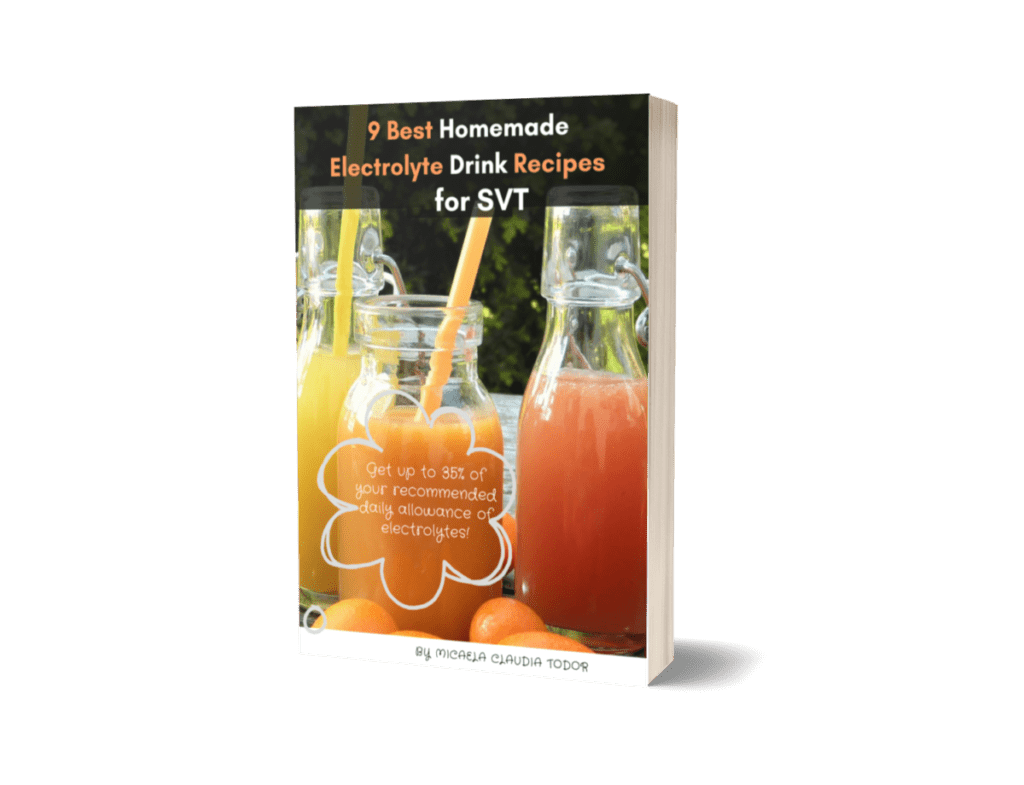
What are electrolytes?
Electrolytes are minerals that, dissolved in your bodily fluids, favor the transmission of electric impulses throughout your cells.
You may not know it, but your cells are constantly communicating with each other. This communication is mediated by electrolytes and through this way they make sure that all parts of the body have everything it needs to function properly!
Functions of electrolytes:
- regulate heart rhythm
- control the level of water in the tissues
- ensure the muscle contractions are effective
- production of energy from glucose
The list of electrolytes in the human body:
- Sodium (Na+)
- Potassium (K+)
- Chloride (Cl-)
- Calcium (Ca+)
- Magnesium (Mg+)
- Phosphor (HPo4-)
Potassium
Why is Potassium crucial for your heart?
Potassium is crucial for your heart because it helps to regulate your heartbeat.
Potassium also helps to keep your blood pressure under control and prevent arrhythmias (irregular heartbeats). Without enough potassium, your heart may not be able to pump blood effectively, which can lead to a heart attack or stroke.
The heart consists of cardiac cells specialized in the transmission of electrical impulses. The generation of electrical current in the heart with the help of potassium ions leads to the contraction of the heart muscle.
When you lack potassium, the nerve impulses through the heart become weaker. Therefore, you will have ineffective contractions that will also change the heartbeat leading to palpitations.
When muscles lose electrolytes, they become more fatigue. Probably, this is why we feel tired after an attack of SVT.
Potassium is found in many foods, including fruits and vegetables. The best way to get enough potassium is to eat a variety of fresh, unprocessed foods.
You can also take supplements, but it’s always best to get nutrients from food first. Talk to your doctor if you’re concerned about your potassium levels. They can order a test to check your potassium level and make sure you’re getting enough.
Sodium
You mainly get sodium from salt. Salt contains 40% sodium and 60% chloride.
A large amount of salt in the diet will result in the extraction of water from inside the cell into the extracellular space, resulting in edema and an increase in blood pressure.
Depending on your diet type, you will consume more or less salt.
Due to following a standard American diet that contains predominantly processed and fast food, many meat products, dairy products, cheeses, people consume much more salt than the recommended daily allowance.
For a vegetarian or vegan, the salt intake will be lower because fruits and vegetables have a large amount of potassium but a low salt level. It is important how much sodium you bring into the body through food compared to potassium.
The right balance between Potassium and Sodium
Having the right balance of potassium and sodium in our bodies is important for many reasons.
Potassium helps to regulate blood pressure and heart rate, while sodium is needed for muscle contraction and nerve function.
When these two minerals are out of balance, it can lead to health problems.
Too much sodium can raise blood pressure, putting strain on the heart and arteries. This can increase the risk of heart disease, stroke, and kidney disease.
On the other hand, too little potassium can also cause problems. This can lead to muscle weakness, cramps, and an irregular heartbeat.
The recommended intake is 4700 mg of potassium and 1500 mg of sodium per day. The ratio is 3:1. Let’s take as an example a bag of Kettle chips that has 210 mg of sodium and a cup of cooked broccoli that has 457 mg of potassium.
Every time you eat a bag of chips, you need to eat a cup and a half of steamed broccoli to keep the right balance of sodium and potassium.
Magnesium
Magnesium is used in over 300 enzymatic reactions in the body. Among them are the transmission of electrical impulses, food transformation into energy, blood pressure regulation, and muscle contraction.
It helps keep the balance between sodium and potassium in the heart, which is necessary for normal heart function.
Magnesium also strengthens your bones, prevents irregular heart rhythms and helps prevent osteoporosis. Additionally, magnesium can help relieve anxiety and improve sleep quality.
The human body is very good at regulating its magnesium levels. Magnesium is found in many different foods and is also produced by the body itself.
The body uses magnesium to produce energy, to repair cells, and to maintain healthy bones and teeth.
When the body doesn’t have enough magnesium, it will take it from wherever it can find it. This includes taking it from the bones or from the blood.
If there is not enough magnesium in the diet, the body will use its stores of magnesium to make up for the shortfall.
Calcium
99% of the calcium in the body is stored in the bones. The remaining 1% is in the blood.
If there is too much calcium in the blood, the excess is distributed to the bones. When there is insufficient calcium in the blood, the body will take some from the bones to keep its concentration in the blood stable.
Calcium in the blood is used for several essential body functions such as the transmission of nerve impulses, muscle contraction, regulation of heartbeats, and blood clotting.
Electrolytes – Recommended Daily Allowance (RDA)
If you are used to reading product labels, I assume you are familiar with the RDA (Recommended daily allowance).
Before 1941, it was not known what is the vitamin or mineral requirement in food to ensure people’s health.
In the second world war, many soldiers fell ill and died on the battlefield due to a lack of vitamins and minerals.
The government decided to establish the minimum quantities of minerals and vitamins necessary to avoid disease. This is how RDA was established.
It is important to consume the right amount of electrolytes every day.
The recommended daily intake for electrolytes depends on a number of factors, including age, sex and activity level. Here are the general guidelines for electrolyte intake:
RDAs (Recommende Dietary Allowance) for Minerals
| Minerals | Potassium | Sodium | Magnesium | Calcium |
| RDA | 4700 mg | 1500 mg | 320-420 mg | 1000-1200 mg |
Low level of electrolytes – symptoms
When you’re thirsty, your body needs more fluids and electrolytes to maintain the balance of electricity throughout all its cells.
| Low Potassium | Low Sodium | Low Magnesium | Low Calcium |
| Rapid heart rate, Ectopic heart beats | Reduced blood volume which leads to hypotension | Heart arrhythmia, Rapid heart rate Dizziness | Congestive heart failure Blood clotting |
| Leg cramps | Muscle/abdominal cramps | Muscle cramps and twitching | Severe muscle cramping or twitch, tingling sensations |
| Muscular weakness, tremor | Fatigue | Muscular tension, Chronic fatigue | Muscle irritability Spastic stomach Tremors |
| Anxiety | Anxiety | ||
| Weak bones |
With these drink recipes, you can quickly calculate how many minerals are in each sip.
These drinks are packed with nutrients and minerals that are essential for good health, and they taste great too! I hope you enjoy them as much as I do.
